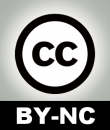Summary
Healthcare is a vast service industry focused on improving and maintaining the health of individuals and communities. It encompasses the prevention, diagnosis, treatment, and management of illnesses, injuries, and other physical and mental impairments. Key aspects of healthcare include the provision of services, the resources (human, financial, and physical) needed to deliver those services, and the organization of these resources to achieve optimal health outcomes.
OnAir Post: Health Care
About
Source: Gemini AI Overview
1. Scope of Healthcare
- ServicesHealthcare includes a wide range of services, from primary care (routine checkups, vaccinations) to specialized treatments (surgery, complex medical procedures) and mental health services.
- SettingsThese services are delivered in various settings, including hospitals, clinics, doctor’s offices, nursing homes, and even through home healthcare.
- Key PlayersHealthcare systems involve various stakeholders, including healthcare professionals (doctors, nurses, therapists, etc.), patients, and payers (insurance companies, government programs, and individuals).
2. Functions of Healthcare
- Promoting and Maintaining HealthHealthcare aims to prevent illness, promote well-being, and manage chronic conditions.
- Treating Illness and InjuryIt provides diagnosis and treatment for illnesses and injuries, aiming to restore health and reduce suffering.
- Improving Quality of LifeHealthcare plays a vital role in helping individuals cope with illness and impairments, improving their overall quality of life.
3. Key Aspects of a Well-Functioning Healthcare System
- AccessibilityEnsuring that healthcare services are available and affordable to all members of the population.
- QualityDelivering healthcare that is safe, effective, patient-centered, timely, efficient, and equitable.
- EquityAddressing disparities in healthcare access and outcomes, ensuring that everyone has a fair chance to be healthy.
- Cost-EffectivenessManaging healthcare costs while maintaining or improving quality.
- IntegrationCoordinating care across different settings and providers to ensure seamless and efficient service delivery.
4. Healthcare in the US
- Mixed SystemThe US healthcare system is a mix of public and private, for-profit and non-profit entities.
- Dominant Private InsurancePrivate insurance, often provided through employers, is the most common form of coverage.
- ChallengesThe US system faces challenges related to cost, access, and equity.
Challenges
The healthcare industry faces a multitude of interconnected challenges, including rising costs, workforce shortages, technological advancements, and addressing health inequities. These issues are further complicated by an aging population, the prevalence of chronic diseases, and the ongoing need for innovation in care delivery.
Initial Source for content: Gemini AI Overview 7/16/25
[Enter your questions, feedback & content (e.g. blog posts, Google Slide or Word docs, YouTube videos) on the key issues and challenges related to this post in the “Comment” section below. Post curators will review your comments & content and decide where and how to include it in this section.]
1. Rising Costs
- Medical inflationHealthcare costs are increasing at a rate faster than inflation, driven by factors like drug prices, administrative expenses, and the cost of new technologies.
- Payor denialsIncreased claim denials by insurance companies lead to more administrative work for providers and can delay patient care.
- Administrative overheadA significant portion of healthcare spending goes towards administrative tasks, which can be inefficient and costly.
2. Workforce Shortages and Burnout
- Staffing shortagesHealthcare systems are facing shortages of nurses, physicians, and other healthcare professionals, particularly in rural areas.
- Burnout and stressHealthcare workers experience high levels of burnout and stress, leading to increased turnover and impacting the quality of care.
- Attracting and retaining talentHealthcare organizations need to find ways to attract and retain qualified staff, including competitive salaries, supportive work environments, and opportunities for professional development.
3. Technological Advancements and Adoption
- Integration of new technologiesAdopting new technologies like electronic health records (EHRs), telehealth, and AI requires significant investment and careful integration into existing workflows.
- Data security and privacyProtecting sensitive patient data in the digital age is crucial, requiring robust cybersecurity measures and adherence to privacy regulations.
- Equitable access to technologyEnsuring that all patients, regardless of location or socioeconomic status, have access to the benefits of new technologies is essential.
4. Addressing Health Inequities
- Disparities in careCertain populations experience significant disparities in access to care, quality of care, and health outcomes due to factors like race, ethnicity, socioeconomic status, and geographic location.
- Social determinants of healthAddressing social determinants of health, such as poverty, lack of access to healthy food, and inadequate housing, is critical for improving health equity.
- Systemic changesAddressing health inequities requires systemic changes in healthcare delivery, policy, and community-based interventions.
5. Chronic Disease Management
- Rising prevalence of chronic diseasesChronic diseases like heart disease, diabetes, and cancer are leading causes of death and disability, requiring ongoing management and preventative care.
- Prevention and early detectionInvesting in preventative care, early detection programs, and patient education can help reduce the burden of chronic diseases.
- Integration of careCoordinating care across different healthcare settings and providers is crucial for managing chronic conditions effectively.
6. Regulatory and Policy Changes
- Evolving regulatory landscapeHealthcare organizations must adapt to changes in regulations, such as those related to privacy, billing, and quality reporting.
- Impact of policy changesHealthcare policy decisions can have a significant impact on access to care, costs, and quality, requiring careful consideration and planning.
7. Patient Safety
- Hospital-acquired infectionsInfections acquired in hospitals are a significant threat to patient safety.
- Medication errorsPreventing medication errors requires robust systems and protocols for prescribing, dispensing, and administering medications.
- Patient falls and other adverse eventsHospitals must implement measures to prevent patient falls and other adverse events.
Innovations
Several key innovations are revolutionizing healthcare and addressing critical challenges. These include telemedicine and remote patient monitoring, artificial intelligence (AI) and machine learning (ML), 3D printing, and immunotherapy. Telemedicine and remote monitoring improve access and chronic disease management, while AI aids in diagnostics, drug discovery, and personalized treatment. 3D printing offers customized and affordable medical devices, and immunotherapy shows promise in treating various diseases, including cancer.
Initial Source for content: Gemini AI Overview 7/16/25
[Enter your questions, feedback & content (e.g. blog posts, Google Slide or Word docs, YouTube videos) on innovative research related to this post in the “Comment” section below. Post curators will review your comments & content and decide where and how to include it in this section.]
1. Telemedicine and Remote Patient Monitoring
- Enhanced AccessTelemedicine makes healthcare more accessible, particularly for those in remote areas or with mobility limitations.
- Improved Chronic Disease ManagementRemote patient monitoring allows for continuous tracking of vital signs, enabling timely interventions and proactive management of chronic conditions.
- Reduced CostsTelehealth can reduce the need for in-person visits, potentially lowering healthcare costs.
2. Artificial Intelligence (AI) and Machine Learning (ML)
- Improved DiagnosticsAI algorithms can analyze medical images (like X-rays and MRIs) with greater speed and accuracy, potentially leading to earlier and more accurate diagnoses, according to Quora.
- Drug DiscoveryAI can accelerate the drug discovery process by analyzing vast datasets and identifying potential drug candidates.
- Personalized TreatmentAI can help tailor treatment plans to individual patients based on their unique characteristics and medical history.
- Predictive AnalyticsAI can predict potential health risks and enable proactive interventions, reducing the burden of acute care.
3. 3D Printing
- Customized Medical Devices3D printing allows for the creation of customized prosthetics, implants, and other medical devices tailored to individual patient needs, according to Deloitte.
- Lower Costs3D printing can potentially reduce the cost of producing certain medical devices, making them more accessible.
- Rapid Prototyping3D printing allows for rapid prototyping of new medical devices and tools, accelerating the innovation process.
4. Immunotherapy
- Cancer TreatmentImmunotherapy harnesses the body’s immune system to fight cancer cells, offering a potentially more targeted and less toxic approach than traditional chemotherapy, according to LinkedIn.
- Treatment of Other DiseasesImmunotherapy is also being explored for treating other diseases, such as allergies, inflammatory conditions, and infectious diseases.
- Reduced Side EffectsImmunotherapy has the potential to reduce the severe side effects associated with some conventional treatments.
5. Other Innovations
- Next-generation sequencing
Used to identify at-risk populations and personalize treatment. - Point-of-care diagnostics
Enables faster and more convenient testing at the point of care. - Virtual Reality
Simulates environments for rehabilitation and behavioral change. - Social Media
Leveraging social media to track patient experiences and population health trends.
Projects
Current and future healthcare projects are focusing on digital transformation, addressing workforce shortages, and improving access to care. These initiatives include leveraging technologies like AI and machine learning for diagnostics, implementing telehealth solutions, and developing innovative care models to manage rising costs and improve patient outcomes.
Initial Source for content: Gemini AI Overview 7/16/25
[Enter your questions, feedback & content (e.g. blog posts, Google Slide or Word docs, YouTube videos) on current and future projects implementing solutions to this post challenges in the “Comment” section below. Post curators will review your comments & content and decide where and how to include it in this section.]
Current & Future Projects Addressing Healthcare Challenges
- Digital Transformation
- AI and Machine Learning
AI is being used for early disease detection, personalized treatment plans, and streamlining administrative tasks. For example, AI is being used to analyze medical images to detect cancer at earlier stages. - Telehealth
Remote patient monitoring, virtual consultations, and digital therapeutics are expanding access to care, particularly for underserved populations. - Electronic Health Records (EHRs)
Improving interoperability and data sharing between healthcare systems to enhance care coordination and patient experience. - Blockchain Technology
Enhancing data security, patient privacy, and supply chain management within the healthcare ecosystem.
- AI and Machine Learning
- Addressing Workforce Challenges
- Expanding the Clinical Workforce
Initiatives include increasing residency slots, loan forgiveness programs, and streamlining the process for foreign-trained physicians to practice in the US. - Reducing Burnout
Focusing on strategies to improve work-life balance, reduce workload, and provide mental health support for healthcare professionals. - Utilizing Technology
Automating routine tasks, improving communication, and optimizing workflows to alleviate the burden on healthcare staff.
- Expanding the Clinical Workforce
- Improving Access to Care
- Community-Based Care
Expanding access to care in underserved areas through mobile clinics, community health centers, and partnerships with local organizations. - Targeted Interventions
Addressing health disparities by focusing on specific populations and tailoring interventions to their unique needs. - Affordable Care
Developing innovative payment models, negotiating lower drug prices, and promoting preventative care to reduce the overall cost of healthcare.
- Community-Based Care
- Quality Improvement Initiatives
- Reducing Medical Errors
Implementing protocols to reduce medication errors, infections, and other preventable adverse events. - Improving Patient Safety
Focusing on patient identification, medication reconciliation, and fall prevention to minimize risks. - Streamlining Processes
Optimizing patient flow, reducing wait times, and improving the overall patient experience.
- Reducing Medical Errors
- Specific Examples
- Nurse Appointment Scheduling Solutions
Streamlining appointment scheduling to improve efficiency and patient satisfaction. - Hospital Information Management Systems (HIMS)
Integrating various hospital departments to improve data management and communication. - Laboratory Information Management Systems (LIMS)
Optimizing lab operations for faster and more accurate test results. - Pharmacy Management Systems
Enhancing medication management and dispensing processes.
- Nurse Appointment Scheduling Solutions


